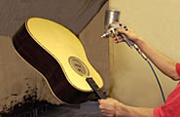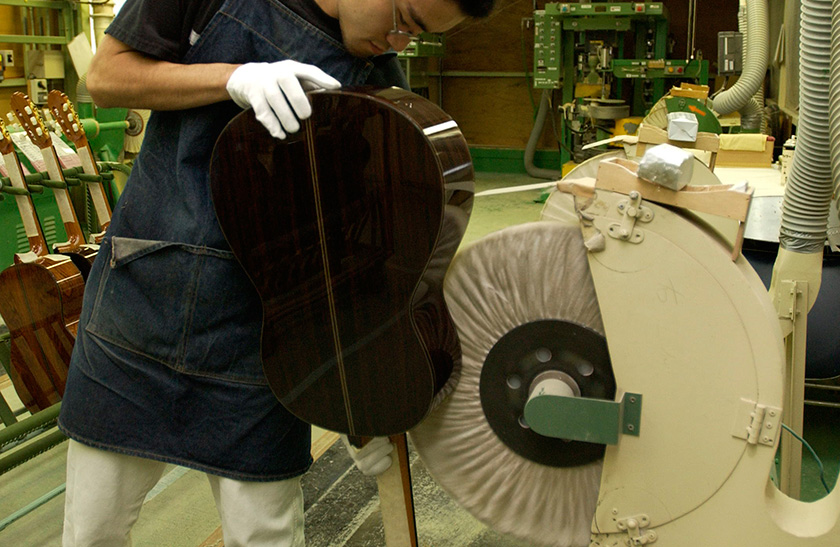How the Acoustic Guitar is Made
Coating and polishing gives the instrument a beautiful finish
Is it better to use a thin coating?
After temporarily joining the body and neck, we next move on to the coating process. This involves applying an undercoat, intermediate coat, and then a light coat over that. Each time the guitar is coated, the coating is sanded down.
The thickness of the final coating should be from 0.1 to 0.2 millimeters or less. The more expensive a guitar is, the thinner the finish of its coat will be. Guitars produce sound through resonating, so the sound they ultimately produce should be as close as possible to the sound of the wood the instrument is made from, which is why thin coatings are better.

Painted with a spray gun
Coating the neck takes more care than you might think
Even more care must be taken when coating the neck than the body. It has a rounded shape and the pores of the wood come to the surface, so when coating it is necessary to fill in these indentations while gradually bringing it to a flat shape.
Never polish too much!
During the next process, buffing, the surface of the guitar is brought to a beautiful finish. After applying polishing compound, the guitar is then pressed against a buffing wheel (cloth) and polished. However, over-polishing will remove the coating that was applied-it is a very fine line!

The instrument is polished during the buffing process
Musical Instrument Guide : Acoustic Guitar Contents
Structure
How the Instrument is Made
Choosing an Instrument
Trivia
- The guitar top is actually two panels stuck together
- The shape of the pick guard is dictated by the manufacturer
- Collector's item with a modern Japanese style
- Cutaways make it easier to access upper frets
- Why do the spaces between frets grow narrower down the neck?
- The order guitars and violins are strung in differs
